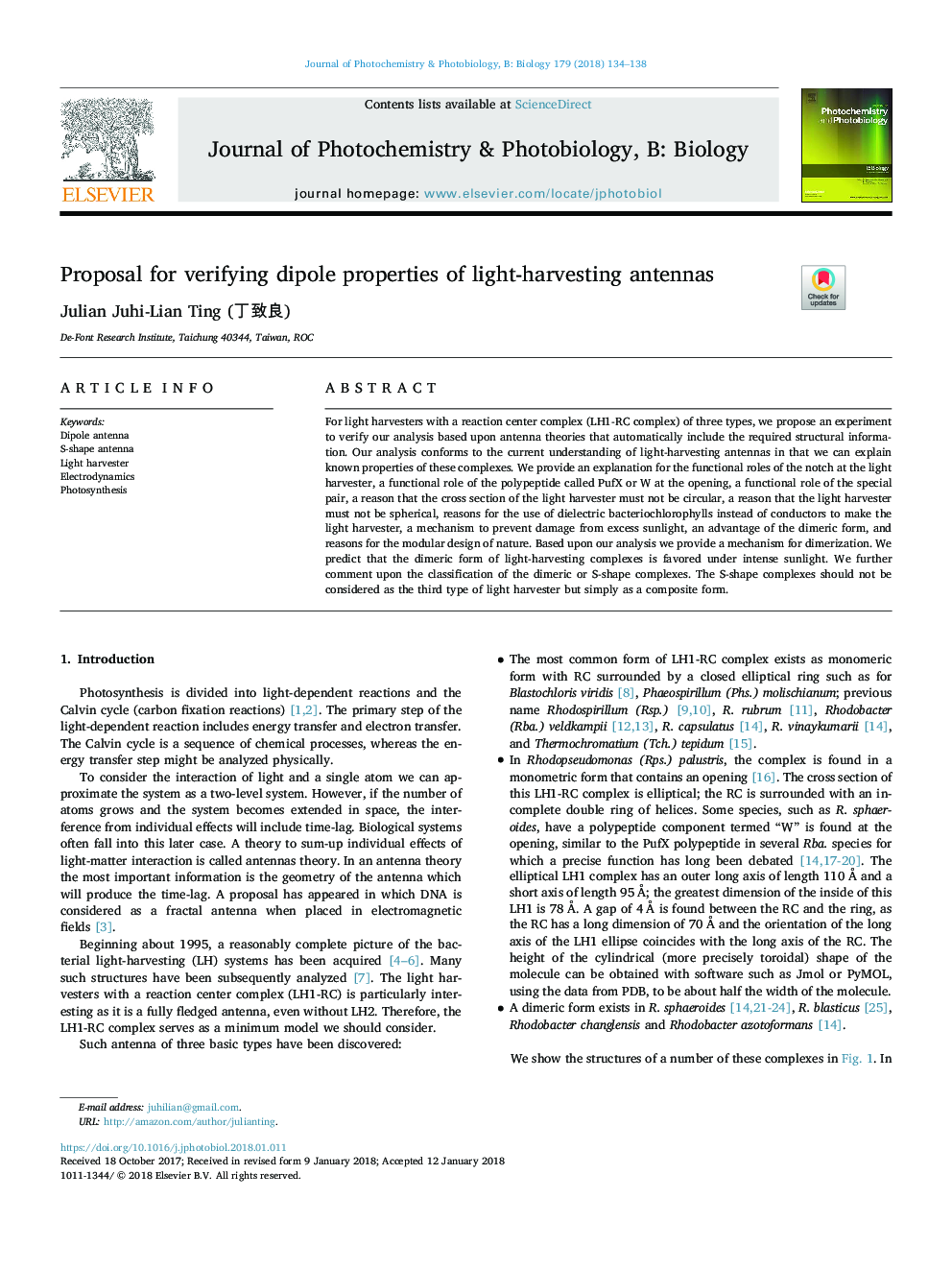| Article ID | Journal | Published Year | Pages | File Type |
|---|---|---|---|---|
| 6493390 | Journal of Photochemistry and Photobiology B: Biology | 2018 | 5 Pages |
Abstract
For light harvesters with a reaction center complex (LH1-RC complex) of three types, we propose an experiment to verify our analysis based upon antenna theories that automatically include the required structural information. Our analysis conforms to the current understanding of light-harvesting antennas in that we can explain known properties of these complexes. We provide an explanation for the functional roles of the notch at the light harvester, a functional role of the polypeptide called PufX or W at the opening, a functional role of the special pair, a reason that the cross section of the light harvester must not be circular, a reason that the light harvester must not be spherical, reasons for the use of dielectric bacteriochlorophylls instead of conductors to make the light harvester, a mechanism to prevent damage from excess sunlight, an advantage of the dimeric form, and reasons for the modular design of nature. Based upon our analysis we provide a mechanism for dimerization. We predict that the dimeric form of light-harvesting complexes is favored under intense sunlight. We further comment upon the classification of the dimeric or S-shape complexes. The S-shape complexes should not be considered as the third type of light harvester but simply as a composite form.
Related Topics
Physical Sciences and Engineering
Chemical Engineering
Bioengineering
Authors
Julian Juhi-Lian (ä¸è´è¯),
